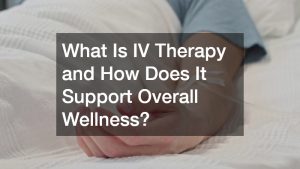Food and water — the two most important needs of every human are also some of the most susceptible to disease-causing pathogens. Contaminated drinking water causes 502,000 deaths annually from diarrhea alone, and over 48 million become sick due to food-borne diseases each year. Fortunately, significant technological advancements are here to change that.
Technology elevates food and water safety protocols, helping businesses and organizations avoid incidents or outbreaks while providing the public with safe food and water.
Whether you’re planning on establishing a business surrounding water and food usage, or want to help your community out, here are the best technologies that ensure food and water safety.
UV Water Purifier
Large water purification systems can be expensive and time-consuming. That’s why researchers have developed a revolutionary UV water purifier housed in a black triangle that can cut down the water filtration process from 48 hours to around 20 minutes. Although this innovation is still far from mass production, its effectiveness and progress suggest it could pave the pathway to a new generation of water purification that can transform even the dirtiest water from a water well into safe potable water.
Irradiation
In the past, even if companies implemented stringent food production standards, there was no 100% way to ensure food is entirely safe or free from organisms. However, irradiation can address this issue effectively. It’s a non-thermal innovation technique used in food safety that can kill bacteria without damaging the products. It uses X-rays, gamma rays, or electron beams to achieve this, and it’s completely safe as it doesn’t affect the food, only the DNA of living organisms, including disease-causing pathogens.

It can eliminate virulent pathogens that can withstand conventional food safety protocols and practices like canning. If you’re worried about radiation getting in your food with this practice, you don’t need to worry since the food never comes in direct contact with the radiation source. It’s a food safety practice approved by the FDA and WHO.
Ozone
Ozone is a disinfecting agent commonly used by municipalities to treat water and provide to residents. This chemical can be used in both its gaseous or liquid state, and can effectively treat water and food by eliminating harmful pathogens. Gaseous ozone is ideal for water-sensitive food like berries, while ozonized water can help remove bacteria on meat and produce surfaces. Although it’s an excellent method to purify water and disinfect food, ozone disinfection systems are costly, with the smallest systems costing around $25,000.
Pasteurization
Pasteurization is a traditional practice in ensuring food safety and has been around in the early 1800s. When people during that era started to suspect milk was the primary source of illnesses such as typhoid fever, Louis Pasteur developed the “pasteurization” method to kill harmful bacteria in food and liquids. It achieves this by treating food and drinks with mild heat, eliminating pathogens, and extending shelf life.
Although technology has been considered a luxury in the past, today, more digital tools and gadgets are now more affordable, widespread, and accessible. These technologies streamline operations, enhance safety protocols, and mitigate food-borne or waterborne illness risks. If you’re considering starting a food service business or other niches surrounding food and water, incorporating these technologies is one of the smartest moves you can do — ensuring food and water safety while keeping businesses healthy and safe.







